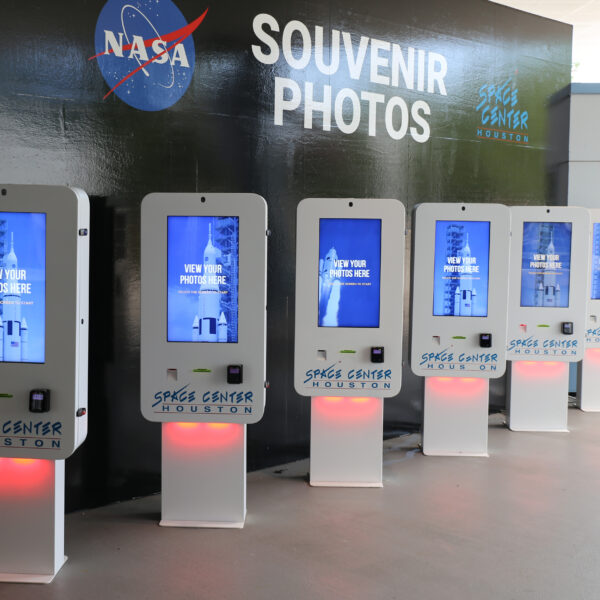
Kiosks
Close
Kiosk Industries


Not all touchscreens are created equal… or at least, not all touchscreens are the same when it comes to intended purposes.
On the surface, a kiosk touchscreen and an everyday tablet appear to be interchangeable. Both are interactive and can provide similar services. However, there are several aspects to consider when deciding between employing a commercial monitor or mounting a tablet.
While a consumer tablet certainly can work in some scenarios, there are noteworthy advantages that a commercial kiosk display has that make it a better choice for business purposes.
Kiosk touchscreens and tablets may look similar, but they do have some important design differences.
Tablets are consumer grade electronics, meaning their main purpose is to serve individuals or perform smaller-scale functions. Many tablets now come equipped with a “kiosk mode” to use for business, which is why they can be successfully used in some settings. However, even with this feature turned on, the inside workings and exterior design of the tablet remain the same.
Tablets have limited battery life, which may not be sufficient for continuous operation as a kiosk without frequent recharging. A tablet can remain continuously plugged into a power source to sidestep this issue. However, keeping a tablet plugged in for an extended period can permanently damage the battery health, which can eventually prevent it from powering on.
Differences in physical durability should also be considered. Consumer tablets typically have much shorter lifecycles when compared to the commercial grade screens that are used in kiosks. Tablets are not designed to withstand the same amount of wear and tear as industrial touchscreens.
When it comes to outdoor kiosks, a commercial touchscreen is crucial as there are specially designed touchscreens that weather outdoor elements.
Security is always a concern when comparing a simple tablet stand to a kiosk enclosure, but it’s about more than just the physical vulnerabilities of this setup.
Apart from basic theft, personal tablets can be vulnerable to tampering and unauthorized access, which could compromise the integrity of the kiosk's functionality.
A normal consumer grade tablet is equipped with the appropriate software protection necessary for the limited access of domestic or personal use, not for open access to the public. And even in kiosk mode with additional security software implemented, these applications can be overwritten more easily in a standard tablet.
Commercial kiosk touchscreens are equipped with technology specifically intended for public access and safeguard against hacking, malware, and other malicious cyber security threats. This is particularly important when considering the information patrons may input based on different kiosk applications.
Tablet updates, troubleshooting, and maintenance may be more time-consuming compared to dedicated kiosk solutions. Tablet companies regularly release updates for their products, and because a tablet relies upon applications to properly operate as a kiosk, this can cause interference. When systems are routinely upgraded, such as with tablets, most apps will eventually require updates too, both to continue smoothly operating on the system as well as the apps’ own necessary updates.
Tablets that are used as kiosks require much greater RAM power than the average consumer tablet. This additional RAM power can be relatively expensive, so using them as kiosk displays may not be as cost-effective as one might believe, especially when considering the potential for damage or theft in public spaces.
When it comes to customization, commercial touchscreens are pre-designed with the ability to pair with additional components, such as printers, barcode scanners, or cash dispensers. Personal tablets are simply not built to connect to such peripherals, nor are they equipped with enough ports to do so.
Something else to consider is scalability. Tablets tend to offer a few standard sizes within a limited range, and these may or may not meet specific kiosk requirements. Commercial screens offer a wider scale of options, making it much easier to find the right fit for a particular project.
Depending on a company or project’s technological needs, a tablet may or may not fit the bill. While it is possible to use standard tablets in place of kiosks, it’s important to understand the limitations that come along with doing so.
Know what you need, what you want, and which option is more aligned with that vision. Consider durability, security, cost and customization requirements or preferences before choosing between consumer tablets and commercial touchscreens for your upcoming kiosk program.